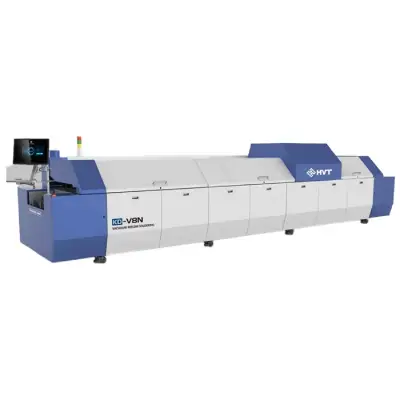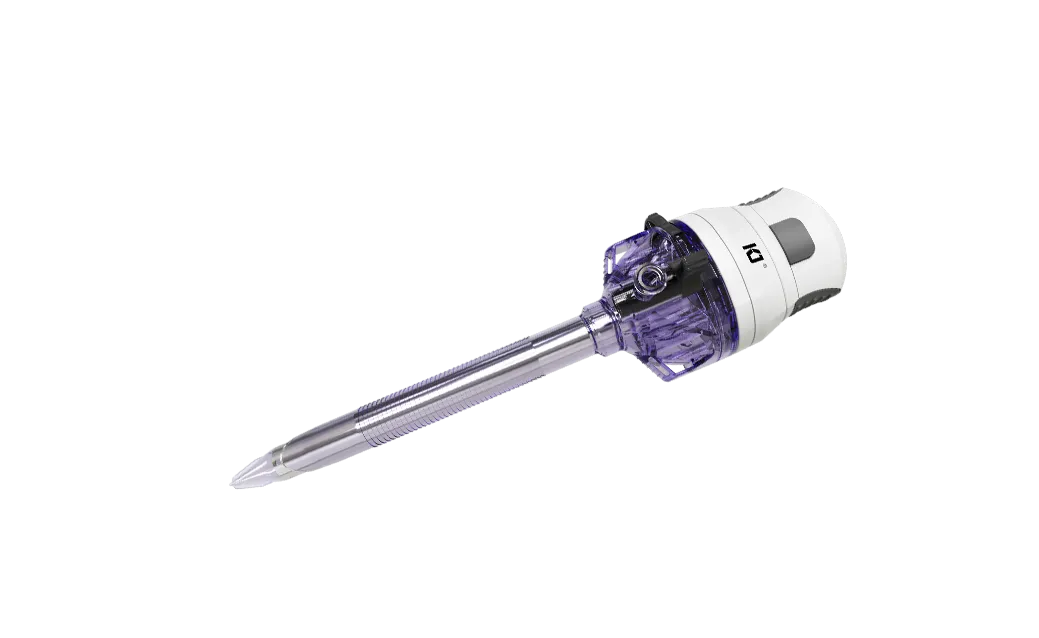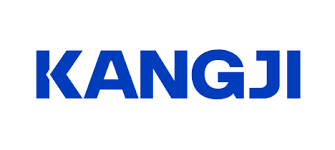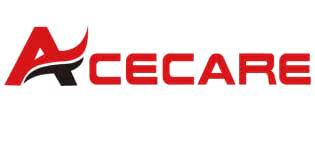All components of the assembly are conveyed through a reflow oven equipped with an infrared lamp, which provides the heat needed to melt solder and bond electrical elements.
Moreover, the infrared lamp's temperature can be precisely controlled. By gradually increasing the temperature, a sudden rise in temperature can compromise solder joints and make them vulnerable to thermal shock. Thermal shock-related issues can be avoided through the implementation of reflow soldering.
In electronics assembly, reflow soldering involves applying solder paste to contact pads on printed circuit boards (PCBs). As the solder paste undergoes heating in order to establish electrical connections, it serves as the medium for attaching electrical components to the board. During the process of reflowing, the solder paste is heated in order to establish electrical connections.
All components of the assembly are conveyed through a reflow oven equipped with an infrared lamp, which provides the heat needed to melt solder and bond electrical elements.
Moreover, the infrared lamp's temperature can be precisely controlled. By gradually increasing the temperature, a sudden rise in temperature can compromise solder joints and make them vulnerable to thermal shock. Thermal shock-related issues can be avoided through the implementation of reflow soldering.
What Is Reflow Soldering?
Preceding the actual reflow soldering procedure, a series of essential steps are executed. These include the application of solder paste onto the designated contact surfaces or pads of the PWB and the precise placement of components onto the deposited solder paste. Subsequently, the reflow process is initiated, subjecting the entire assembly to elevated temperatures surpassing the melting point of the solder alloy. As the temperature gradually decreases, the solder alloy solidifies, engendering the formation of robust and dependable solder joints.
Pros of Reflow Soldering
- It is preferable for SMT assembly
- It induces minimal thermal shock.
- It is one of the most reliable soldering technique
- It has options for limited soldering
- It requires only a minimum level of monitoring
- It results in reduced material wastage.
- Specific PCB areas can be soldered using this technique.
Reflow Soldering Process and Tips
In order to craft an appropriate reflow profile, thermocouples are affixed to a basic assembly, often utilizing high-temperature solder, positioned at various locations to gauge the temperature variations across the PCB.
Please take note of the following recommendation: It is advisable to place a thermocouple on the pad located at the front edge of the printed board and another thermocouple towards the board's center. This method of assessing temperature differentials across the board through thermocouples is commonly referred to as "DeltaT."
The reflow profile encompasses four key phases of the process that require your vigilant consideration:
- Proheat- As part of this process, the printed circuit board, components, and solder are heated to a specific dwell temperature or soak temperature, and the main aspect is not to heat the components or solder too rapidly (usually no more than +2 degrees per second). As a result of fast heating, component defects may occur, such as slattering or cracking of solder paste.
- Soak- During this part of the process, the components are allowed to reach the required temperature before going on to the next reflow stage. The soaks usually last between 60 and 120 seconds.
- Reflow-To form a liquid solder paste in the oven, the temperature is raised above its melting point. To ensure that "wetting" occurs between the printed board and the components, the solder must be held above the melting point temperature for a period of time (time above liquidus). To prevent brittle solder joints, the time should not exceed 30 to 60 seconds. It is also important to know that the peak temperature has to be strictly controlled as many of the components can fail if exposed to excessive heat. If the reflow profile does not provide sufficient heat, it will result in bad solder joints, which is one of the most common defects.
- Cooling- It is not healthy to heat the assembly rapidly, so make sure to never cool it down too rapidly, because it could cause malfunctions. The recommendation is to keep cooling above 3 degrees a second.
Reflow Soldering Temperature Requirements
In the case of Sn/Pb solders, the melting point temperature generally reaches its zenith between 215°C to 245°C, with a duration of approximately 20-60 seconds above 183 degrees.
For lead-free soldering, the reflow temperature should attain 260°C.
Reflow soldering ovens commonly feature distinct temperature zones, with periodic adjustments in temperature following a predetermined curve. These adjustments are made in accordance with the assembly's particulars and temperature prerequisites.
Hvttec has a reflow soldering oven with 8 temperature zones which can be used for reflow soldering.
Suitable Machines and Equipment
A wide array of reflow soldering machines exists, each specializing in distinct designs, processing speeds, materials, and PCB specifications. It is crucial for the oven to be of an appropriate size to seamlessly accommodate the production pace of the pick-and-place equipment.
Here's a method for calculating the production line speed:

Best Reflow Soldering Machine Manufactuer--Hvttec
Here are some reasons why to choose Hvttec:
- They utilize nitrogen reflow soldering to efficiently avert oxidation.
- They possess the capability to reflow solder a wide range of printed circuit boards, including those that are lead-free.
- They employ cutting-edge machinery and technology, including 30 Panasonic and Yamaha SMT lines, German ERSA selective wave soldering, solder paste inspection using 3DSPI, AOI (Automated Optical Inspection), X-ray, and more.
- Prior to assembly, they conduct a meticulous and complimentary review of your bill of materials.
- They perform functional testing of the PCBA (Printed Circuit Board Assembly) before delivering it to you.
- They offer comprehensive component sourcing services, ensuring all the necessary components in your bill of materials are readily available for assembly.
Conclusion
Hvttec offers top-notch PCB assembly services characterized by precise component placement and flawless soldering. Whether your order is small or substantial, Hvttec is equipped to handle your assembly requirements. If you have any reservations, don't hesitate to click and request a free online quote.











